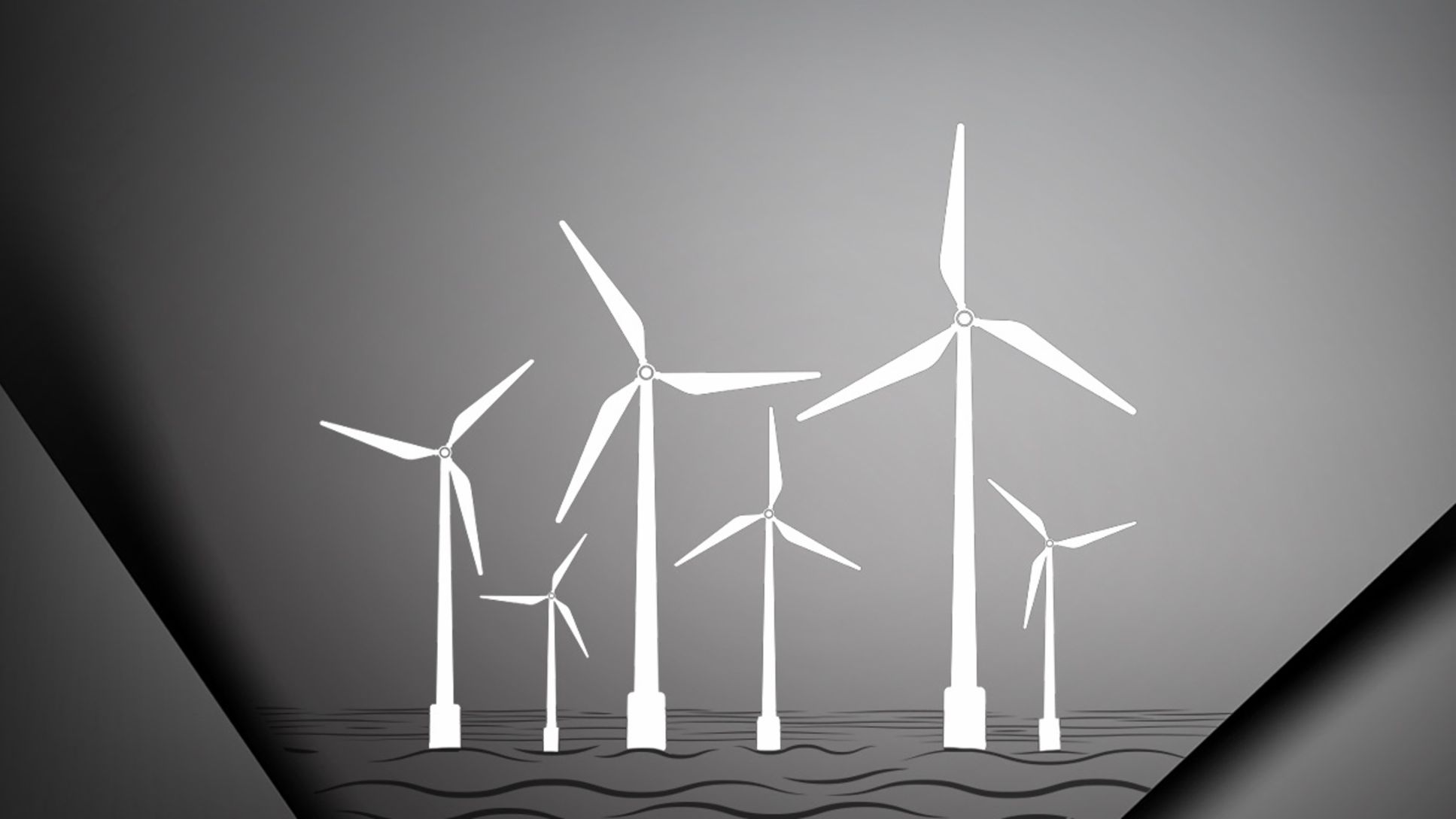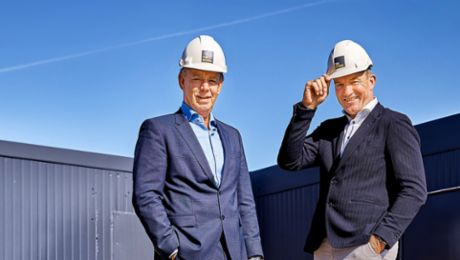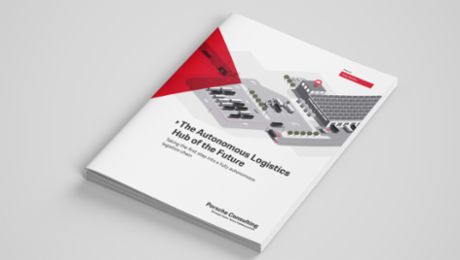Guiding questions
1. Which country leads the world in wind power expansion?
2. What are the challenges facing wind turbine producers?
3. How can western suppliers benefit from the future-oriented wind turbine market?
Countries around the world are setting ever more ambitious climate goals that can only be met by greatly expanding their sources of renewable energy. Wind power is playing a major role here, which makes the turbines ever more important as well. Despite these generally positive prospects, the market is also facing strong headwinds.
In addition to explaining why that is so, this impulse will tell you which parts of the world are most active in building wind power generators, which players dominate the global wind turbine market, and which challenges they need to address. We conclude by sketching how manufacturers can profit from this future-oriented market.1
China is the global leader in building wind turbines and has ten of the largest turbine manufacturers
Comprehensive measures to expand wind power facilities have been taken around the world now for about twenty years. Total global wind power capacity in 2022 was 906 gigawatts, according to the GWEC.2 Around 93 percent of that level was produced by installations on land (onshore).3
Wind power is being developed most intensively in the People’s Republic of China, which currently has a total capacity of 365 gigawatts. That is more than 150 percent higher than the next-largest player, namely the USA with 144 gigawatts. They are followed by Germany (67 GW), India (42 GW), and Spain (30 GW).4
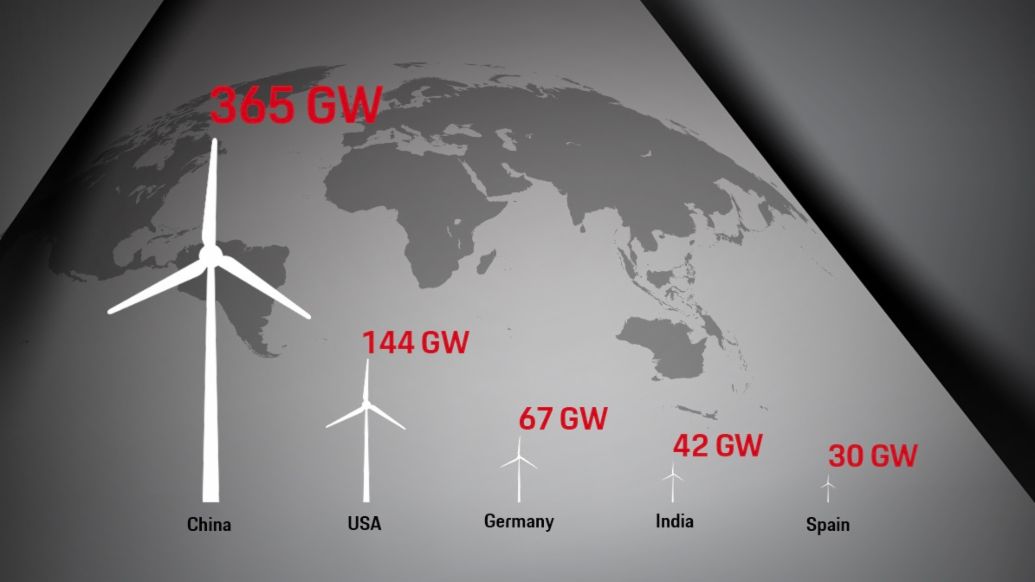
The PRC’s dramatic lead is also evident in the fact that it accounted for nearly half of new onshore installations in 2022 (47 percent). Even more significant is the difference for offshore locations, with China building 58 percent of new installations in 2022.
China is therefore the leader in this segment, which is predicted to grow more strongly in the future. The GWEC expects around 36 gigawatts from new offshore installations in 2027. An additional 122 gigawatts are expected from onshore turbines.5
With China commanding the greatest global wind power capacity, it is no surprise that it has ten of the world’s 15 largest wind turbine manufacturers. Of the other five, four are in Europe and one in the USA.6
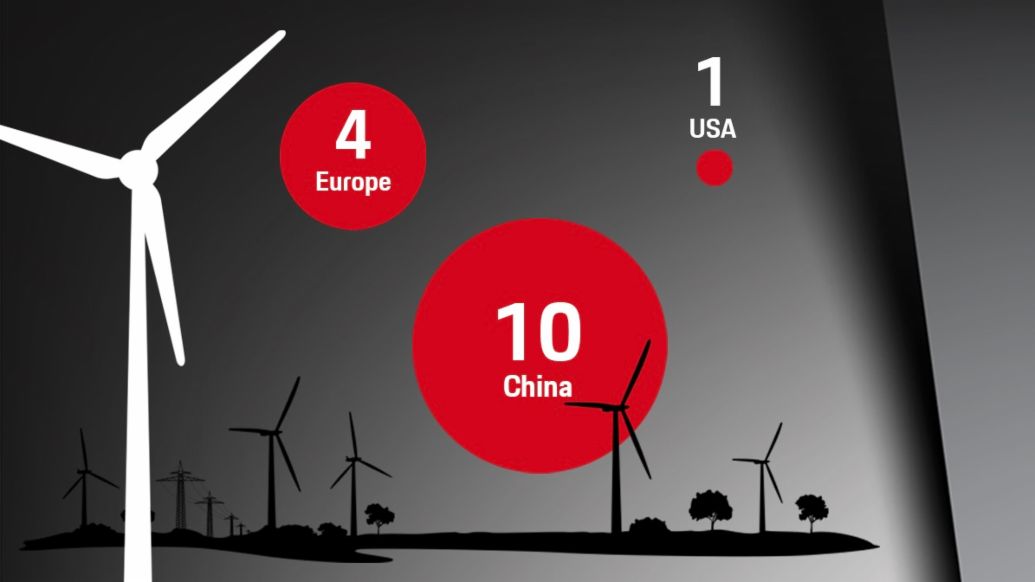
Economic “weather forecast” prompts higher wind turbine prices
Like manufacturers in other sectors, wind turbine makers were hit extremely hard by the COVID pandemic. Major factors included high prices for raw materials (especially copper and steel) and shipping, along with unstable supply chains.
Delivery reliability during the pandemic fell to just 5 percent, which caused huge delays in installing wind farms and putting them into operation. That triggered some severe contractual penalties for manufacturers, which in turn exacerbated their cost pressures. The situation has now eased somewhat worldwide, but remains a challenge.
Shipping costs are relevant for wind turbine makers because some farm components are often produced on one continent and assembled on another. For onshore farms, shipping accounts for up to 6 percent of overall investment costs.These effects have led major providers to raise their prices by 30 percent or more over the past two years.7
The sector is marked by price wars, quality issues, and changing overall political conditions
Until recently, however, manufacturers engaged in serious price wars, with effects still evident today. In addition, as all the interview partners noted, the sector is plagued by uncertainties given that political priorities, framework conditions, and therefore also budgets can change at any time.
In Denmark, for instance, 33 wind farms with a total capacity of 13–21 gigawatts were recently shelved and an investigation launched as to whether the authorization procedure conforms to EU regulations.8
With the EU Commission having recently categorized new gas and nuclear plants as climate-friendly, there is also a risk that EU funding will now be diverted away from wind power.
In addition to these financial uncertainties, lengthy and complex authorization procedures also present challenges. “The overall process from planning to starting up a wind power installation can take three to five years,” observes the head of production for a European manufacturer. “This protracted period of time does not make our lives easy.” In Germany alone, for example, 10 gigawatts of capacity are currently in the authorization stage. And 1.73 gigawatts currently in planning are already past the start-up date originally announced.
Here the sector’s own problems should be noted, such as the poor quality of many installations. This becomes apparent when important components or even entire turbines break down. In September 2021 a wind turbine in Germany collapsed, as did a large new turbine in Lithuania in the spring of 2022.
Along with quality issues, the sector faces enormous technological hurdles. Large-scale installations require economical means of compensation and storage to ensure network dependability during periods of low wind levels. The problem is especially acute for weaker and less stable grids.
Another feature of the market is a tendency toward large offshore farms that yield up to 15 megawatts. In parallel to that, the market is intensifying for smaller onshore farms of up to seven megawatts. “They are easily produced by just about any provider these days,” notes one CTO. Overall, as also shown by our interviews, the sector is marked by strong competition and therefore also consolidation. Half of all providers in the gear unit segment, for example, have disappeared over the past decade.
Yet another feature of the sector is the very small market for rotor blades. Just ten manufacturers meet 80 percent of worldwide demand. “The extremely complex manufacturing process makes it hard for new providers to enter this market,” reports a senior manager. “That makes us rather dependent on just a few providers.”
Regarding wind turbine manufacturers as such, in China they are expected to merge until just a few large ones remain.
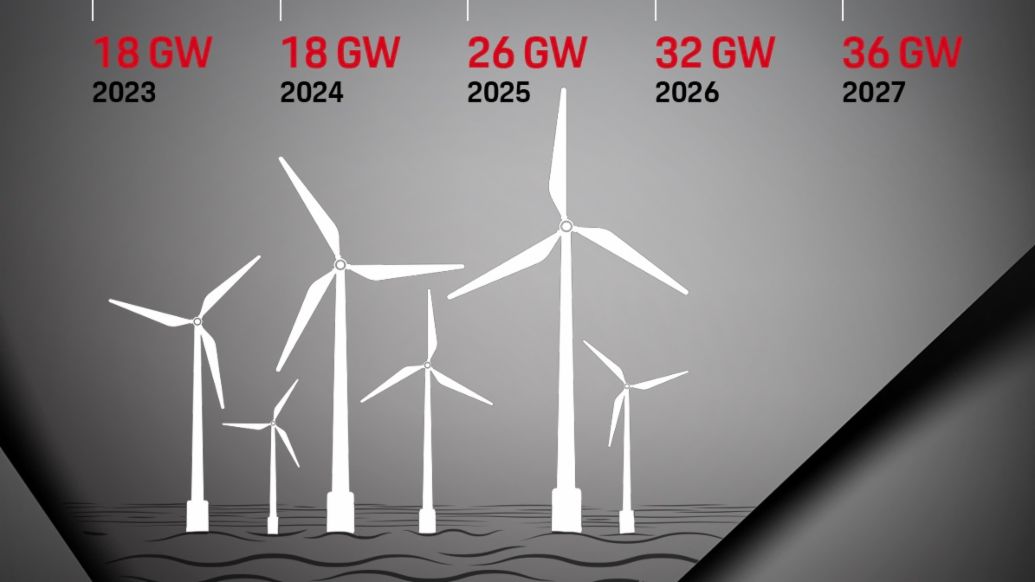
How can western providers profit from the wind turbine market in the future?
In order not to cede even more of this future-oriented market to Chinese providers, European and U.S. manufacturers in particular have to become more flexible and innovative. Continuous adaptation of their respective business strategies is crucial here. It is important for companies to critically examine their core markets and the competitiveness of their portfolios on an ongoing basis. For example, they might concentrate on the onshore segment and accept the intensity of that market, or shift offshore and master the logistical complexities of installation and maintenance processes. Rough weather conditions in the North Sea mean that for an average of four months a year, they generally cannot access farms there to provide maintenance. Intelligent and automated solutions are needed to streamline processes and maximize turbine operation times.
It also makes sense to consider specialization, for instance in the largest rotor blades, or to concentrate exclusively on services such as repairs or maintenance. A key factor with respect to wind turbines is their quality, for in effect what is sold is not the turbines themselves but rather their energy output. If turbines break down, this can lead to enormous claims for compensation. As such, running time and therefore quality are essential.
Given the global nature of the transcontinental business models sketched above, supply chains require especially intensive management. For one thing, they need to be shaped in far more resilient ways, albeit always with an eye to their ecosystems and relevant ESG aspects. It can also be helpful to minimize risk by entering into partnerships.
And finally, operating models need to be continuously adapted to meet new challenges. The complex or lean quality of production processes, for example, will determine whether comparatively simple onshore turbines or highly complex offshore systems are made. Logistics processes have to be designed strategically as well. Wind turbines are enormous products, with rotor diameters of up to 236 meters for offshore models. A 50-meter rotor already weighs 25 tons—scrupulous planning for transport and assembly are needed for dimensions of this magnitude.
If these aspects can be integrated into clever strategies, European and U.S. wind turbine makers can profit from this future-oriented market despite the challenges currently involved. Manufacturers can not only be commercially successful but also make valuable contributions to the energy transition that go above and beyond purely financial benefits.
Key takeaways
1. Wind power is expanding most intensively in China; the PRC has a current capacity of 365 GW.
2. The wind turbine production sector is marked by price wars, quality issues, and changing policy frameworks.
3. Western providers need to become more flexible and innovative. Continuous adaptation of business strategies is of crucial importance here.
Authors
Dirk Pfitzer, Senior Partner at Porsche Consulting and Industry Lead "Industrial Goods"
Dr. Ümit Aydin, Partner at Porsche Consulting, Industrial Goods
Dr. Dominik Eckstein, Associate Partner at Porsche Consulting, Energy
(1) This article reflects insights from talks with CxOs of leading providers and from our analysis of publicly available data.
(2) Global Wind Energy Council, the international industry association headquartered in Brussels
(3) GWEC (2023), Global Wind Report 2023
(4) GWEC (2023), Global Wind Report 2023
(5) GWEC (2023), Global Wind Report 2023
(6) GWEC market intelligence
(7) Own calculations based on S&P global market intelligence
(8) Spiegel online, “Dänemark legt Dutzende Offshore-Windkraftprojekte auf Eis,” February 9, 2023
Info
Text first published in Porsche Consulting Magazin.
